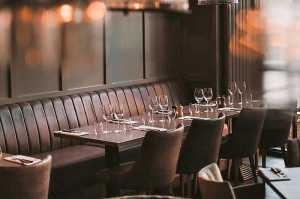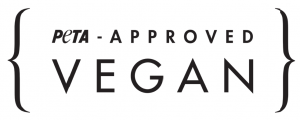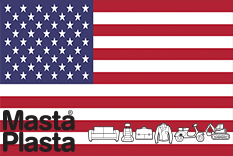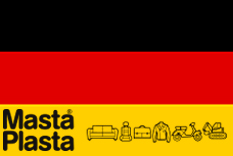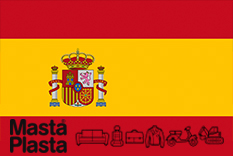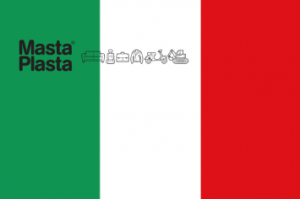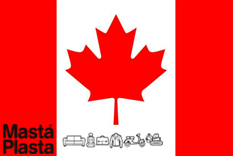We worked with leather hides for years in the furniture industry. As furniture designers, we had stores in Shoreditch (Spitalfields and Colombia Road), Covent Garden, Notting Hill and Manchester’s Northern Quarter. Trust us, we know a lot about leather (there’s a post on the different types below). And we appreciate that it holds a certain allure for many people but we have come to question that. Here’s 10 reasons why :
Unless it’s aniline leather, pretty much all other leather has some kind of polymer coating on it and/or is saturated with pigments. So-called semi-aniline leather is the industry’s great mis-selling opportunity as there is no real clear definition – the hope is when you buy this that you are getting the top layer of a hide with only a thin pigment coating, allowing the natural surface and tones to show through, evening out imperfections and offering some protection. I’ve seen it compared with putting a sheer wood coating on your decking. The leather industry has done a really good job of selling us chemically-coated leather that can completely mask any natural finish but goes on to sneer at leathers at the cheaper end of the market for having chemical coatings – by dismissing coatings in one breath and promoting them in another the industry has already made it’s case against most of its output. What I’m trying to say is that there is very little natural about the leather you are sitting on apart from the fact it came from an animal.
For some reason the leather industry seems to have taken ownership of the word “genuine”. It’s like saying you are buying a “genuine” LED screen TV or a “genuine” apple pie. I think it is something we haven’t really stopped to question but it is something that has successfully made people think they are getting something natural and real, as if they are buying an apple fresh off the tree rather than a KFC drumstick coated in breadcrumbs, which would be a better analogy.
The best leather wholesalers will have books of samples that make you ooh and ahh at the softness and suppleness of their wares. But believe me, the best faux leather producers will having you oohing and ahhing just as enthusiastically. Both markets are filled with the good, the bad and the intensely moderate.
Dive into the good end of the “vegan leather” market and armed with knowledge of production techniques, you don’t feel like you are missing out on anything “genuine” or “natural”. We have visited the production centres of manufacturers of vegan leather – they are full of light and airiness, staff in white coats, laboratories and scientific instruments testing every element of the processes, and libraries full of samples from every batch made to reference against. The rub and stress tests on these fabrics are equal to the best of leathers – more than 100,000 rubs on the martindale scale (just 30,000 rubs is recommended for heavy duty wear).
5. Can you honestly tell the upholstery in this restaurant is not “genuine leather”. Yup it’s vegan leather! You will have to take my word for it that you can’t tell even by sitting on it.
And those beautiful leather seats you luxuriated in when you flew First Class that time, well I hate to tell you…
6. After years of handling hides, we began to feel a little ghoulish about it. We’ve been immersed in fabrics for a long time and had met some incredibly innovative “vegan leather” producers. We knew we wanted to work in their world rather than cutting up thousands of hides. We knew we could produce the perfect “vegan leather” for our patches that would make this decision a no-brainer.
7. While you are being sold your “genuine” polymer-coated leather sofa which is “going to last so much longer than less expensive leather sofas because it is so hard-wearing”, just take a look at the landfills. Some 85% of sofas bought between seven to 15 years ago are here – regardless of what they were made out of. And the percentage goes into the 90s when it comes to sofas over 15 years old. Styles change, your old sofa is just so heavy and cumbersome to try to find a future for when you have its replacement arriving tomorrow – easier just to get the delivery men to take it away and throw it in the landfill for you.
8. The fact is, any sofa, whether it’s the best aniline leather or the toughest-wearing commercial grade (think train seats) fabrics can get damaged. And fairly easily too. That’s where we come in. So you really don’t have to fear that one of our non-genuine leather patches is not quite worthy of fixing our aniline sofa – it definitely is :)
9. The term vegan leather may seem a bit of an oxymoron, but we want to communicate to our customers that our patches possess all the desirable qualities as those attached to “genuine leather” – it feels like leather, looks like leather and acts like leather. It is breathable, supple and tough. What is more, 99% of solvents used in the production is recycled and you will most definitely not find any formaldehyde or volatile organic compounds here.
10. We now love to say: no animals were harmed in the making of this company :)
 Made in England. Patent No: GB2461518 | Registered Trademark N°012504205
Made in England. Patent No: GB2461518 | Registered Trademark N°012504205
